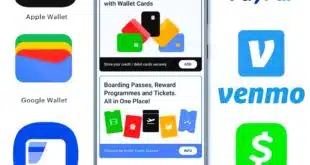Over the past few months, Digital Transactions has reported on how companies across the payments value chain have entered into partnerships to offer a greater range of open-banking services to their customers.
Easy data access will become the norm in banking. While open banking will change how individuals manage their money and accounts, it will also force the financial-services industry to change how it manages customers and their accounts. It will also change compliance, as U.S. regulators have begun to take an interest.
In prepared remarks in December about overdraft, Consumer Financial Protection Bureau director Rohit Chopra described open banking as the cure for an imaginary ill where bank customers are trapped.
“Unfortunately, switching bank accounts isn’t easy … If America can shift to an open-banking infrastructure, it will be harder for banks to trap customers into an account for the purpose of fee harvesting,” Chopra said.
Moving banks can be a hassle, but the notion of “trapping” customers seems extreme. Nonetheless, in July 2021, the Biden Administration tasked the CFPB with writing regulations “to facilitate the portability of consumer financial transaction data so consumers can more easily switch financial institutions and use new, innovative financial products….” So, when regulations come, expect an emphasis on giving customers the ability to move their accounts.
People are creatures of habit. There will not be a wave of bank hopping by customers. However, banks will become aggressive about luring customers away from one another. Marketing and incentives strategies likely will change to focus on how easy it is to move accounts.
People may even maintain fewer accounts. In 2019, Mercator Advisory Group reported that, on average, consumers own 5.3 accounts across all types of financial institutions. That may be due to people wanting a particular service but finding it difficult to move their entire financial life. Now, they might be willing to move all their business for the right set of features and functions.
Account mobility will change the way customers define their primary bank, and thus who they will look to first when they need additional financial services. The ability to share data might make a clearinghouse strategy easier to implement if customers can be convinced to share their data throughout a network of partners.
But companies need to be mindful of how far they intrude on customers’ privacy. Getting too comfortable with data sharing could easily draw the ire of customers and regulators.
Another likely big change will be a new definition of financial data. Atomic Financial helps companies and employees manage direct-deposit information. Lindsay Davis, its head of markets, said human-resources data, like salaries, might soon become part of the open-banking ecosystem as people look for easy ways to get information like proof of income to lenders. She also said the pandemic will drive the adoption of open banking as more workers have gone remote and can’t simply walk over to their HR rep’s office.
With workers staying remote and people looking for digital ways to handle everything, the need to share financial and supplementary data will likely grow as people look for ways to borrow money, make large purchases, and buy things like insurance online.
Financial-service companies need to plan for a world where data, and thus accounts, can move more easily. The temptation is going to be to take a top-down strategic view of open banking. But to succeed, it will be necessary to adopt a customer’s-eye view of what account mobility means for how they handle their money, where they keep accounts, and even how they might be tricked into fraud.
—Ben Jackson, bjackson@ipa.org





